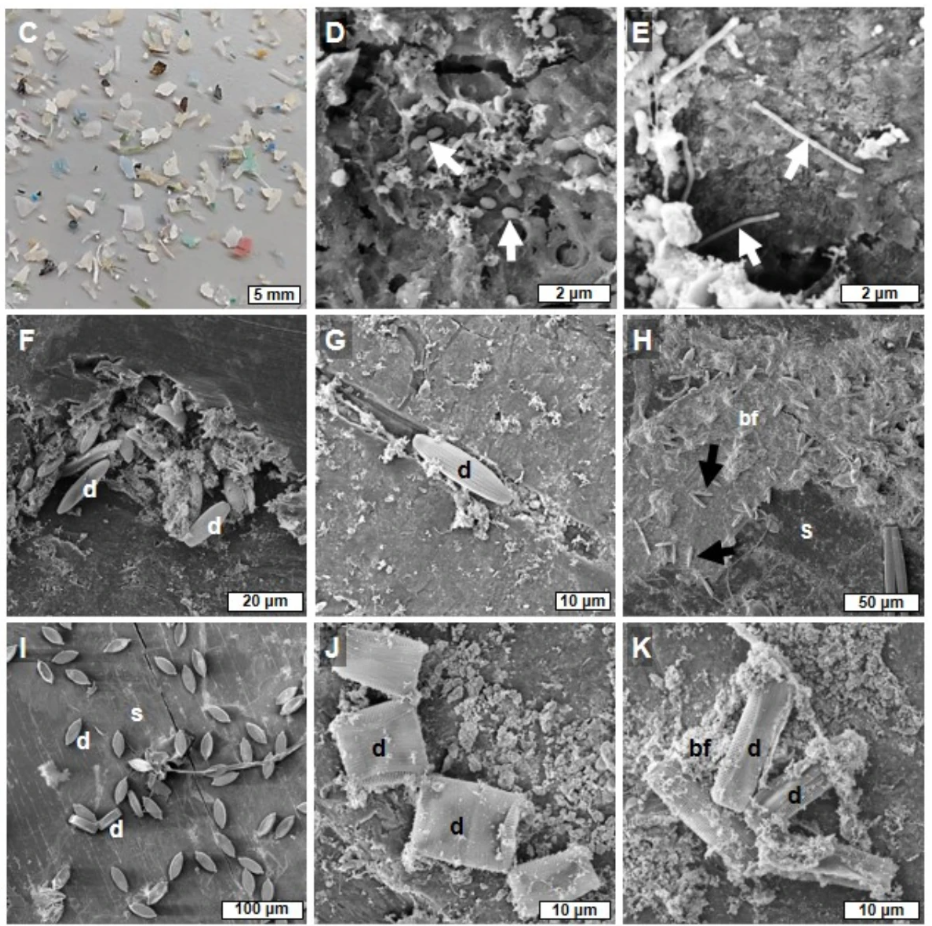Microplastics in the Mediterranean
Two recent studies caught my eye this week, both tackling microplastic pollution in the Mediterranean; but from wildly different angles. One talks about the chemical hitchhikers on plastic debris along Italy’s Calabrian coast, while the other maps out the weird little ecosystems thriving on microplastics in the Eastern Mediterranean. Together, they’re painting a more complex picture of how plastic pollution interacts with marine environments. Let’s unpack this.
Calabrian Coast: Plastics, Ports, and Heavy Metals
The (Brunetti et al., 2025) sampled microplastics from six sites along Calabria’s coastline. They found that areas near commercial ports, like Gioia Tauro and Cetraro; had the highest concentrations of microplastics. Most were polyethylene (PE) fragments between 1-2 mm, which checks out since PE is the poster child of packaging materials. But here’s the kicker: these tiny plastic bits weren’t just passive litter. They were loaded with heavy metals like lead (Pb), chromium (Cr), and zinc (Zn), with levels up to four times higher on the Ionian coast compared to the Tyrrhenian side. The authors argue that MPs might act as “environmental carriers,” shuttling toxic metals into the food chain (Brunetti et al., 2025). Scary stuff, especially when you think about seafood ending up on our plates.

Eastern Med’s Plastisphere: A Surprisingly Stable Ecosystem
Meanwhile, over in the Eastern Mediterranean, (Davidov et al., 2024) spent two years tracking the seasonal drama of microbial life on microplastics. Using DNA metabarcoding, they found that plastisphere communities; those layers of bacteria, diatoms, and archaea clinging to plastic; are way richer in species than the surrounding seawater. And get this: these communities are weirdly stable across seasons, unlike the free-floating planktonic microbes that shift with temperature and storms. The plastisphere was dominated by pennate diatoms (think: elongated, motile algae) like Amphora and Navicula, which you’d normally find glued to rocks, not open water. It’s like these diatoms are squatting on plastic rafts, turning them into mini benthic habitats in the middle of the ocean.
Where These Stories Collide
Both studies left me with a bunch of “what ifs.” For starters, if microplastics are ferrying heavy metals (Brunetti et al., 2025), could the plastisphere’s microbial tenants interact with those contaminants? Some bacteria metabolize metals, others might absorb them; could this affect how toxins move up the food chain? And why are the plastisphere communities so stable (Davidov et al., 2024) despite seasonal chaos? Does the biofilm on plastics act like a protective bubble, buffering microbes from environmental swings? Or maybe the diatoms’ silica shells help anchor the whole community?
Future Research? Let’s Mash These Ideas Up
I’d love to see someone combine these angles. Imagine tracking how heavy metal-laden microplastics influence plastisphere diversity; do certain microbes thrive in contaminated zones? Or conversely, could biofilm-forming species trap metals, reducing their bioavailability? Also, the Calabrian study noted that PE dominated their samples, but Davidov’s team worked with mixed polymers. Does polymer type affect both metal adsorption and microbial colonization? So many variables, so little time…
Both studies also hint at the Mediterranean’s role as a microplastic trap. Brunetti’s crew points to ports and currents as hotspots, while Davidov’s work shows how even in ultra-oligotrophic waters, plastics become bustling microbial cities. It’s a reminder that plastic pollution isn’t just a physical problem; it’s reshaping marine ecosystems in ways we’re only starting to grasp.
References
- EnvironmentsExamining Microplastics Along the Calabrian Coastline: Analysis of Key Characteristics and Metal ContaminationEnvironments, 2025
- Sci. Rep.Community composition and seasonal dynamics of microplastic biota in the Eastern Mediterranean SeaScientific Reports, 2024
Enjoy Reading This Article?
Here are some more articles you might like to read next: